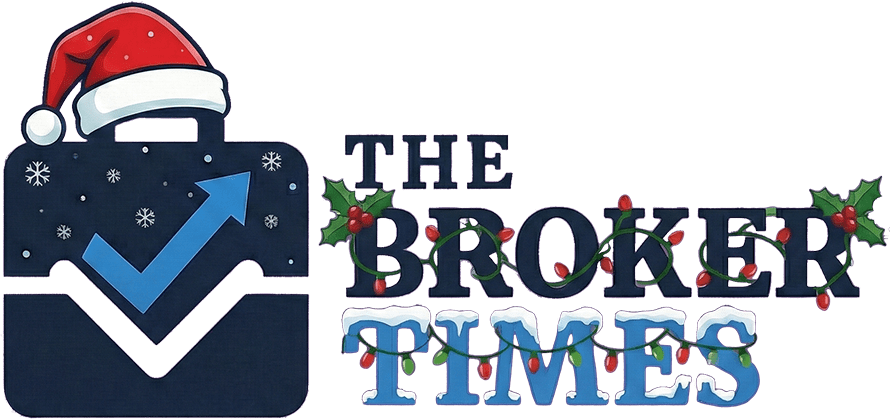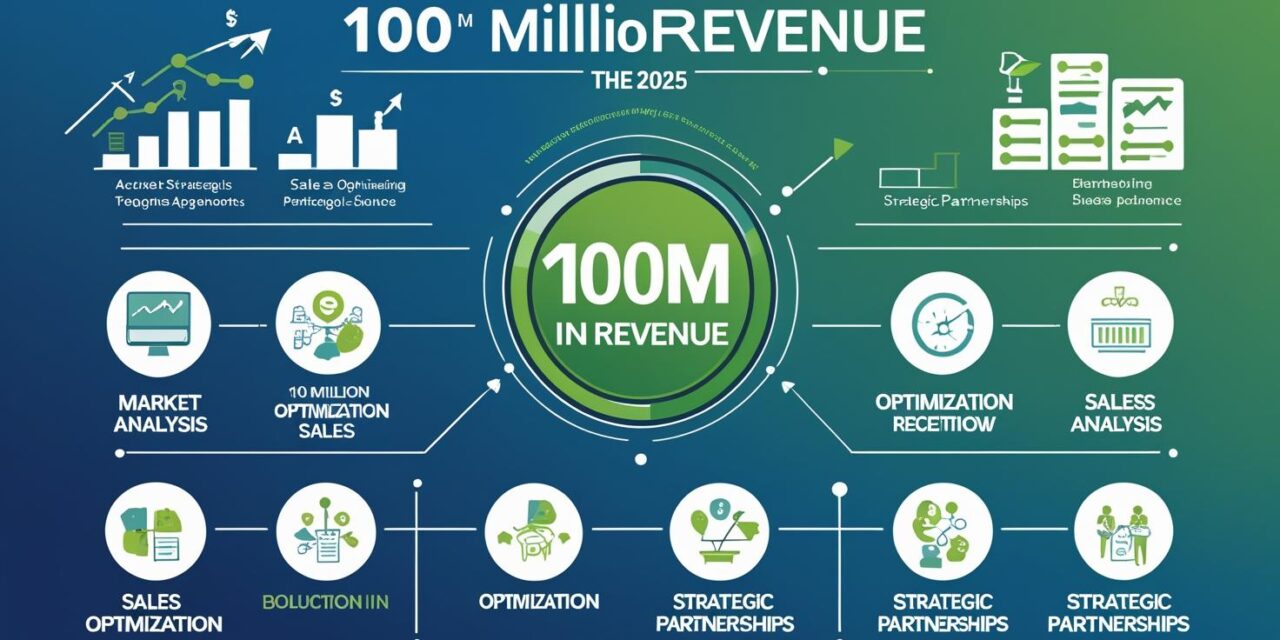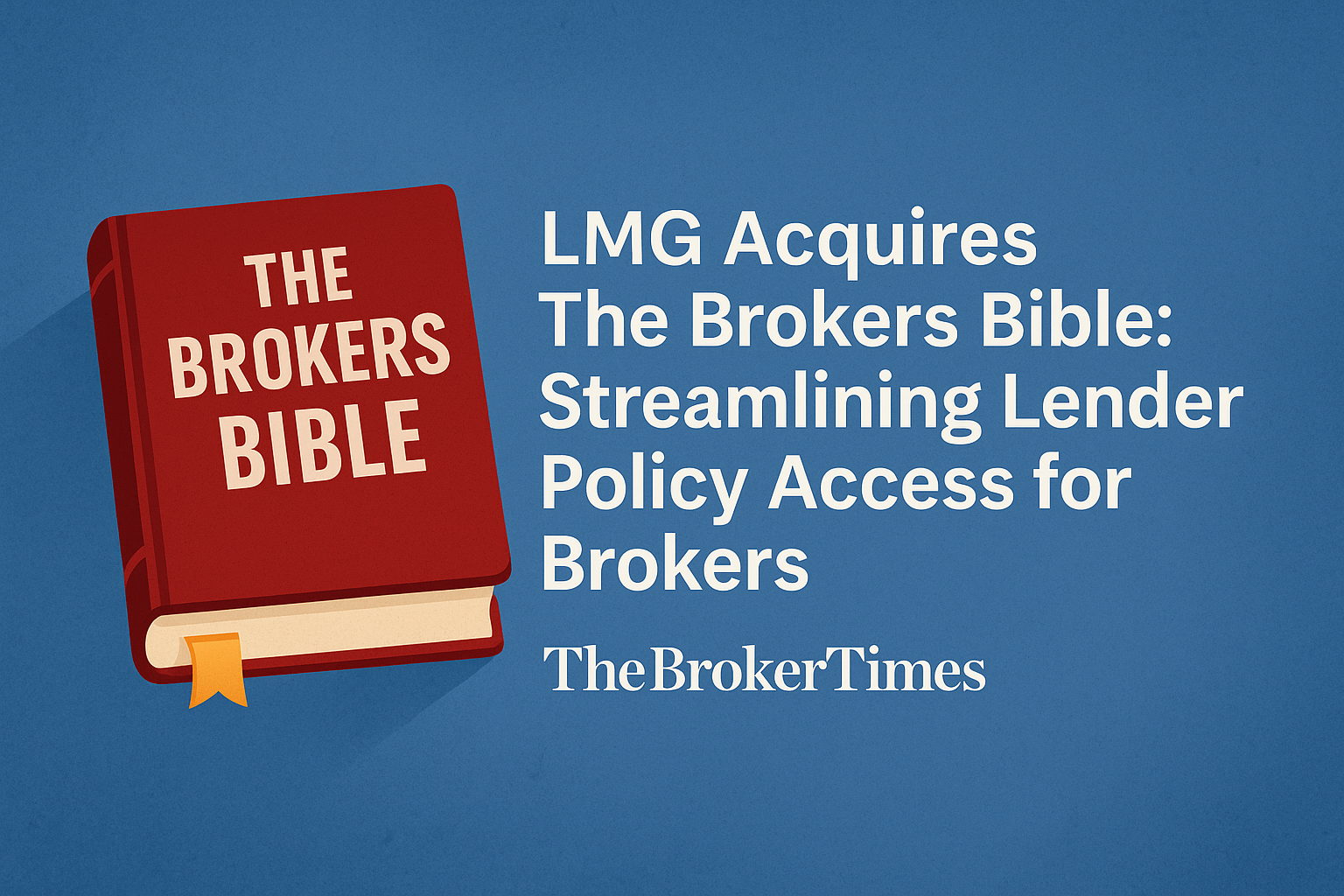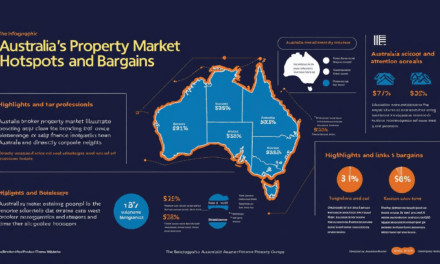Too Busy to Read? We’ve Got You.
Get this blog post’s insights delivered in a quick audio format — all in under 10 minutes.
This audio version covers: The $100M Broker Blueprint: Your Definitive Guide to Scaling in FY25
You’re ambitious. You’ve built your business on referrals, hard work, and sheer hustle. But you’re also time-starved, bogged down by admin, and constantly filtering through a flood of irrelevant industry noise. The goal of writing $100M in annual settlements might feel like a distant dream, something reserved for the big players. But what if it wasn't about working harder? What if it was about working smarter by building a system? This blueprint is your guide to doing just that.
In This Blueprint
Deconstructing the $100M Goal: The Unforgiving Math of Scale
The first step in achieving any large goal is to break it down into its fundamental components. A $100M target becomes far less intimidating when you see the weekly operational cadence required to get there. At its core, hitting this number means consistently settling approximately three loans, every single week of the year.
This outcome, however, is a lagging indicator. It's the end of a process, not the beginning. To achieve it, you must focus on the leading indicators—the inputs that you can control. The real work lies in building and managing a predictable conversion funnel. For a $100M brokerage, that funnel has a clear mathematical structure:
- 40 Qualified Leads must enter the top of your funnel each week. These aren't just names; they are 40 conversations with people who have a genuine need and the basic capacity to borrow.
- 10 Pre-Approvals must be generated from those leads. This represents a 25% conversion rate from a qualified conversation to a client with a green light from a lender.
- 4 Lodgements must be submitted from those pre-approvals. This is a crucial conversion point that we will explore in detail.
- 3 Settlements must result from those lodgements, achieving your weekly target.
The critical shift in mindset is to stop chasing the final number and start managing the process. Your primary objective as a business owner isn't to "hit $100M"; it's to build, refine, and manage the machine that consistently processes 40 qualified leads into 3 settlements week after week. When you focus on perfecting the process, the outcome takes care of itself.
Of course, not all loans are created equal. The volume of settlements you need to write is directly influenced by the average loan size in your primary market. A broker in Sydney has a different path to $100M than one in Adelaide. This "postcode effect" is a vital strategic consideration.
| State | Average Loan Size | Annual Settlements Needed for $100M | Approx. Weekly Settlements Needed |
|---|---|---|---|
| NSW | $779,239 | 128 | 2.5 |
| VIC | $640,000 | 156 | 3.0 |
| QLD | $620,000 | 161 | 3.1 |
| WA | $580,000 | 172 | 3.3 |
| SA | $551,749 | 181 | 3.5 |
The Headwind: Why Scaling Today Requires a Bulletproof System
Generating leads is only part of the equation. The market presents a significant headwind that makes operational efficiency more critical than ever: the "Leaky Funnel." Data reveals a stark and challenging trend: the conversion rate from pre-approval to settlement is projected to plummet from 60.5% in FY22 to just 40.7% in FY25.
This means that for every 10 clients you get pre-approved, nearly six will likely go nowhere. That represents a monumental waste of your time, your team's effort, and your marketing budget.
However, a deeper analysis of the numbers reveals that the leak has a very specific location. The conversion rate from lodgement to settlement remains healthy at 76.1%. The real fracture in the pipeline occurs between the pre-approval and lodgement stages. The math is clear: to get 4 lodgements from 10 pre-approvals, you need a conversion rate of around 40%, which aligns perfectly with the projected industry data.
Key Point: Your growth is capped not by your ability to find leads, but by your ability to convert the pre-approvals you already have. Fixing this leak between pre-approval and lodgement is the single biggest operational lever you can pull to scale your business.
The Blueprint Part I: Building Your Growth Engine
To consistently feed the top of your funnel with 40 qualified leads per week, you need a dual-pronged growth engine that runs on autopilot. This involves building a brand that attracts clients and a system that generates high-quality referrals.
Strategy 1: Stop Being a Generalist. Build a Niche Brand That Attracts.
In a crowded market, being a generalist makes you invisible. The most scalable brokerages become the known experts for a specific audience, such as first home buyers, property investors, or medical professionals in a particular geographic area. A niche focus allows you to:
- Target Your Marketing: Instead of shouting into the void, you can use Google and Facebook ads to reach a high-intent audience with a message that resonates deeply.
- Dominate Local SEO: Optimizing your Google Business Profile is non-negotiable. Actively soliciting reviews from happy clients is marketing gold, as it builds social proof and boosts your local search ranking.
- Build Authority with Content: Create guides, checklists, and tools that solve the specific problems of your niche audience. An "Ultimate Guide for First Home Buyers in Parramatta" is infinitely more powerful than a generic blog post about interest rates.
Strategy 2: Systematise Your Best Leads Through Referrals.
Your happiest clients and professional partners are your most cost-effective source of high-converting leads. However, waiting for referrals to happen by chance is not a strategy. You must build a formal process.
- Leverage the Golden Window: The absolute best time to ask for a referral is within 48 hours of settlement, when your client's satisfaction and gratitude are at their peak. This should be an automated, non-negotiable step in your workflow.
- Master the Partner Playbook: When approaching accountants, financial planners, and real estate agents, lead with your value proposition to them. Your currency is not a commission split; it's certainty and speed. Show them you have a bulletproof process that makes them look good and gets deals done without hassle.
- Remove All Friction: Make it incredibly easy for people to refer you. A simple "Refer a Friend" form on your website or a dedicated email link can make all the difference.
The Blueprint Part II: Forging Bulletproof Operations
This is your direct answer to the "Leaky Funnel" problem. A growth engine is useless if your internal processes can't handle the volume efficiently. Scaling requires you to build a loan "factory" founded on documented processes and run by specialized people. This is the fundamental shift from being a practitioner to a business owner.
Design the Scalable Workflow: From Chaos to Checklists
If a process isn't written down, it doesn't exist. The only way to ensure consistency, enable delegation, and deliver a reliable client experience is to document everything.
- Automate Onboarding: As soon as a lead becomes a client, your system should automatically send out the Credit Guide and a link to your digital Fact-Find. This saves time and sets a professional tone from the start.
- Create Master Checklists: Develop detailed, step-by-step checklists for every single stage of the loan process, from initial contact to post-settlement review. This becomes your brokerage's operating manual.
- Communicate Proactively: Use automated email and SMS updates to inform clients at key milestones (e.g., "Great news! Your pre-approval is secured," "Just letting you know, the valuation has been ordered"). This proactive communication reduces client anxiety and inbound calls, and it is the key to nurturing those pre-approved clients who are prone to dropping out of the funnel.
Build Your Team: Specialists, Not Generalists
You cannot scale if you are the bottleneck. To break free, you must delegate tasks to a team of specialists who can execute your documented workflows flawlessly.
- Client Service Manager (CSM): This role owns the client relationship, communication, and document collection. The CSM is your primary nurturer, responsible for guiding clients through the process and keeping them engaged, especially during the critical pre-approval stage.
- Loan Processor / Credit Analyst: This role owns the file from submission to settlement. They are the expert in liaising with lenders, managing paperwork, and ensuring your applications fly through the system, protecting your high lodgement-to-settlement conversion rate.
- Consider Outsourcing: Don't overlook the power of offshore teams for administrative tasks. This can be a cost-effective way to add capacity and free up your local team for higher-value, client-facing activities.
The Blueprint Part III: The Modern Tech Stack as Your Central Nervous System
Your technology is what enables your operational workflows and team specialization. Relying solely on the generic software provided by your aggregator is a cap on your growth and a direct path to the "Aggregator Crutch" trap. A modern, integrated tech stack is your central nervous system and a powerful competitive advantage.
The most effective model is the "Hub-and-Spoke" approach. Your core CRM (Customer Relationship Management) platform acts as the central hub—the single source of truth for all client and deal information. You then integrate specialized "spoke" applications that are best-in-class at solving specific bottlenecks.
| Business Function | The Bottleneck It Solves | Example Tools |
|---|---|---|
| Core Platform (Hub) | Lack of a single source of truth; manual workflow management. | BrokerEngine, Salestrekker |
| Serviceability | Wasting hours manually comparing complex lender policies. | Quickli |
| Document Collection | High-friction, insecure email attachments; chasing clients for documents. | FinanceVault |
| Compliance (BID) | Treating compliance as a manual afterthought; managing trail book. | Sherlok (for repricing/reviews) |
| E-Signatures | Delays caused by printing, signing, scanning, and emailing documents. | DocuSign |
The Four Traps That Will Derail Your Growth (And How to Avoid Them)
The path to $100M is littered with pitfalls. These are rarely external market forces; they are almost always internal failures of discipline and strategy. Avoiding them is just as important as implementing the right growth tactics.
It's vital to understand that these traps are not random misfortunes. They are the guaranteed symptoms of a business that has failed to build a proper system. Each one is a direct consequence of neglecting one of the core pillars of this blueprint.
⚠️ Trap 1: The Compliance Bottleneck
The Trap: Treating your Best Interests Duty (BID) obligations as a manual, paper-based task that you complete at the end of the process.
The Solution: Build BID directly into your CRM workflow and checklists. Use your technology to create an audit trail automatically. This turns compliance from a burden into an efficient, defensible process.
⚠️ Trap 2: The Data Disaster
The Trap: Inconsistent, incomplete, or inaccurate client data within your systems.
The Solution: Enforce strict data entry standards from day one. Poor data hygiene kills your marketing engine (you can't segment clients for niche campaigns) and breaks your operational automation (you can't trigger referral requests or milestone updates).
⚠️ Trap 3: The Aggregator Crutch
The Trap: Relying exclusively on your aggregator's brand, technology, and processes.
The Solution: Use your aggregator for its core services (compliance, commissions), but invest in building your own brand equity and an integrated tech stack that gives you a competitive edge. This is how you build a saleable asset, not just a franchise seat.
⚠️ Trap 4: Key Person Dependency
The Trap: The business cannot function—let alone grow—if you take a holiday.
The Solution: This trap is the culmination of all the others. If you have documented your workflows, hired specialists to run them, and empowered them with an integrated tech stack, you have built the cure. You have built an asset, not just a high-stress job.
Conclusion: From Practitioner to Architect
The journey from your current revenue to $100M in annual settlements is not about more hustle. It is a strategic transformation from being a broker who does all the work to a business owner who builds the system that does the work. This requires a fundamental shift in mindset. Your goal is no longer to be the best practitioner; it is to be the best architect.
The blueprint is clear. It rests on three interconnected pillars: a Growth Engine that consistently attracts your ideal clients, Bulletproof Operations that convert them with ruthless efficiency, and a Modern Tech Stack that provides the leverage to make it all possible. By focusing on building this system, you solve the industry's biggest challenges, avoid its most common traps, and create a valuable, scalable asset. The data is clear. The plan is here. Now is the time to stop being just a broker and start being the architect of your future. Stay sharp.
Get More Insights





